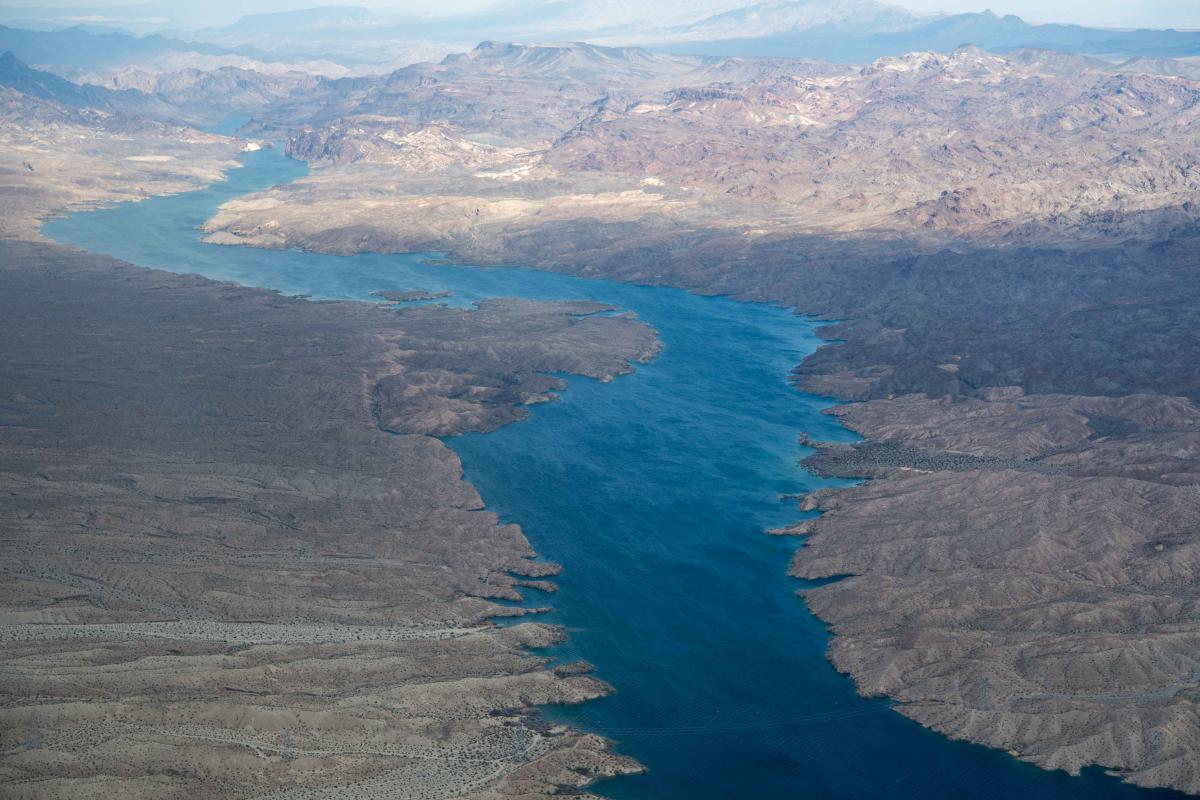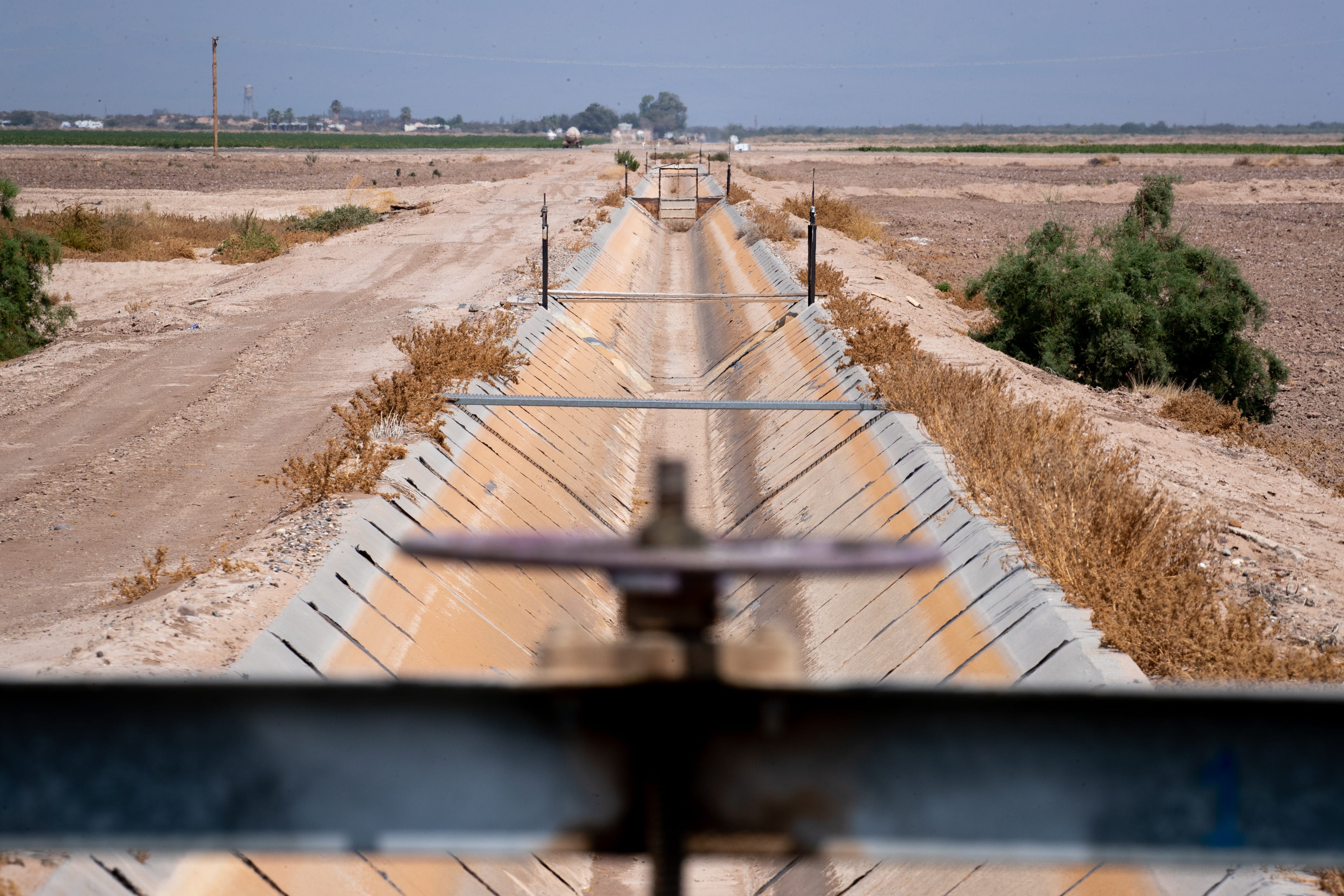colorado river indian tribes water rights
While the Court used the practicably irrigable acreage standard to quantify these rights it made clear that the tribes are free to use the water on reservation for whatever uses they determine. Congress has given that right to many tribes in their water settlements.
Colorado River Indian Tribes Tribal Water Uses In The Colorado River Basin
Ute Indian Tribe Ute Mountain Ute Tribe Southern Ute Indian Tribe Jicarilla Apache Nation Navajo Nation Chemehuevi Indian Tribe Colorado.
. In a press release Kellys office said state and local officials conservation groups and business leaders say the bill is essential to making Arizona more resilient to drought. The member tribes are. California 1963 established water use rights of the Colorado River for CRIT as well as the Cocopah Indian Tribe Chemehuevi Tribe Fort Mojave Indian Reservation and Fort Yuma Indian Reservation.
CRIT has the ability to assist Arizona because of its hard fought water rights to Colorado River water and its ability to fallow farm land when needed. The amounts priority dates and states where the. Historically left out of Western water talks tribes intend to have greater influence in future.
584 Colorado River Indian Tribes Water Supply CRIT possesses present perfected federal Indian reserved water rights from the Colorado River mainstem pursuant to the decree in Arizona v. If given that right we would use our water to preserve the life of the river and reinvest the proceeds to improve the Colorado River Irrigation Project CRIP. Combined they hold rights to a substantial portion of the Colorado Rivers flow.
There are an estimated 4000 persons constituting the four tribes of CRIT. With the oldest water rights in the basin the tribes are in a position to play a significant role in balancing water demand and supply and otherwise shaping. A canal carries Colorado River water to farmland near Poston owned and operated by the Colorado River Indian Tribes a key player in Arizonas completion of the Drought Contingency Plan.
CRIT holds the largest first priority water rights in Arizona for the use of Colorado River water. With the oldest claims to water the tribes command a considerable role in directing the regions future. The Study Report released in December 2018 includes perspectives and positions from each of the Partnership Tribes as statements from the Tribes individual perspective.
Roughly 20 percent or 29 million acre-feet which is. It was introduced by Senators Mark Kelly and Kyrsten Sinema both of whom are Democrats. By Luke Runyon KUNC.
Section 7 of the 1922 Colorado River Compact which addresses Native Americans consists of a single sentence. The Colorado River Indian Tribes are currently working with Arizona Sens. Pursuant to Arizona v.
With the oldest claims to water Native American tribes in the Colorado River Basin command a considerable role in directing the regions future. Senators Mark Kelly and Kyrsten Sinema introduced the Colorado River Indian Tribe Water Resiliency Act legislation that would empower the Colorado River Indian Tribes CRIT to lease a portion of its Colorado River allocation to Arizona communities and reinvest portions of that revenue into making their water infrastructure more efficient. As Shortages Loom in the Colorado River Basin Indian Tribes Seek to Secure Their Water Rights.
These tribes hold legal rights to a significant amount of water many of which are the most senior in the basin. And now they want to lease some of it to others water theyve saved through conservation in the way they farm their land and have for millennia. Combined the tribes hold rights to a substantial portion of the Colorado Rivers flow.
The bill S. 150 2006 commonly referred to as the 2006 Consolidated Decree. The Colorado River Basin Tribes Partnership also known as the Ten Tribes Partnership is an organization formed in 1992 by 10 federally recognized tribes with reserved water rights in the Colorado River Basin.
In 1988 the Colorado Ute Indian Water Rights Settlement Act was approved by the United States government. But for those of us with decreed water rights we still cant lease our water. A study of tribal water rights could shed light on future Indian water use.
The Colorado River Indian Tribes have senior rights to a sizable portion of the Colorados water. As Shortages Loom in the Colorado River Basin Indian Tribes Seek to Secure Their Water RightsWESTERN WATER IN-DEPTH. Mark Kelly and Kyrsten Sinema to pass the Colorado River Indian Tribes Water Resiliency Act of 2021 which would allow the.
3308 is known as the Colorado River Indian Tribe Water Resiliency Act. Colorado River As the Colorado River Basin becomes drier and. 8 rows Although the Colorado Ute Tribes originally settled their water rights claims in the.
Central Arizona Project Governing Board Supports Landmark Federal Legislation That Allows The Colorado River Indian Tribes To Lease Its Colorado River Water And Provide Drought Relief For Arizona PHOENIX By a unanimous vote the Central Arizona Project Governing Board has endorsed The Colorado River Indian Tribes CRIT Water Resiliency Act of 2021S3308. The CRIT Reservation was created in 1865 by the Federal Government for Indians of the Colorado River and its tributaries originally for the Mohave and Chemehuevi who had inhabited the area for. Combined the tribes hold rights to roughly 20 percent or 29 million-acre feet of the water in the Colorado River basin.
This tribal nation is the largest single user of Colorado River water in Arizona with rights to divert about 662000 acre-feet per year more than double the. This water is for use on the Colorado River Indian Reservation primarily in Arizona. There are currently about 4434 Tribal members.
Roughly 20 percent or 36 billion cubic meters 29 million acre-feet which is more water than Arizonas total allocation from the river. Because the Ute tribe has not fully resolved nor developed those rights much of the tribes water goes unused and flows toward Lake Powell the second-largest reservoir on. 50000 acre feet of water is enough water to supply 100000 households for one year.
Nothing in this compact shall be construed as affecting the obligations of the United States of America to Indian tribes The Upper Colorado River Basin Compact went one step further by declaring tribal water rights are to count against. The Ten Tribes Partnership was formed in 1992 by ten federally recognized tribes with federal Indian reserved water rights in the Colorado River or its tributaries.

Interactive Map Indian Water Rights In The Colorado River Basin Circle Of Blue

Crwua Colorado River Water Users Association

As Shortages Loom In The Colorado River Basin Indian Tribes Seek To Secure Their Water Rights Water Education Foundation

Colorado River Water With Senior Rights Could One Day Be Up For Grabs

As Shortages Loom In The Colorado River Basin Indian Tribes Seek To Secure Their Water Rights Water Education Foundation

With Water Leasing Vote Colorado River Indian Tribes Will Seek Consequential Legal Change Circle Of Blue

In Drying Colorado River Basin Indian Tribes Are Water Dealmakers Circle Of Blue
Tribal Water And The Colorado River Thoughts On The Recent Crwua Meeting Jfleck At Inkstain

Colorado River Water With Senior Rights Could One Day Be Up For Grabs